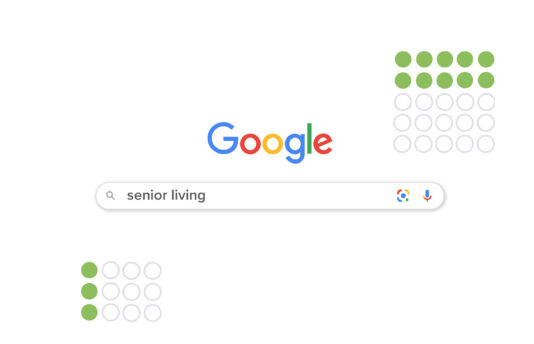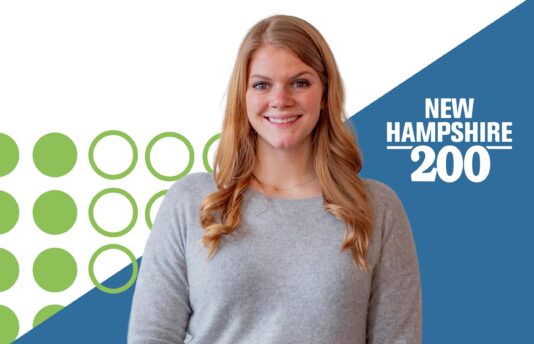Occupancy is the main goal for senior living community marketing campaigns, and the focus is usually on getting leads. But did you know the best way to create a bridge from lead to resident is by using drip campaigns with lead nurturing?
That’s because lead nurturing through drip campaigns provides leads with valuable information at every stage and keeps you top of mind through the buyer’s journey. The strategy is so effective that companies with strong lead nurturing campaigns can get 50% more sales for 33% less money.
So, here’s what you need to know about using drip campaigns for lead nurturing to get more sales for your senior living community.
It Is Highly Personalized
Strict drip campaigns involve sending emails at regular intervals—even if the recipient doesn’t respond or interact.
But when you use drip campaigns for lead nurturing, emails are sent based on the lead’s behavior AND at regular intervals. Certain behavior, such as requesting information, can trigger a response email, which will then begin regularly scheduled drips to educate and inform leads further and nudge them to the next step toward becoming a resident.
The most important thing to remember about using drip campaigns for lead nurturing is to create a personalized experience that is slightly different for everyone because the “drips” are initially triggered and tailored to the lead’s behavior.
It Nets Long-Term Results
While some of your leads will come from seniors with an immediate need, the larger focus should be on reaching leads before the need becomes urgent. The sooner you start a relationship with a consumer and the more they get to know you, the better the fit between the lead and the community.
Because it’s a long process—some 90 percent of potential residents take up to 18 months to decide to move to a senior living community—you may not see results right away.
But implementing these campaigns early in the process will generate a steady stream of prospects into the future that you can turn into ongoing leads and eventually sales.
It Requires Segmentation
Marketing segmentation is nothing more than separating contacts into groups based on demographics, psychographics, personas, habits or anything else that makes them unique.
While some drip emails will be scheduled, they will not be the same for everyone. As mentioned before, they are initially triggered by the lead’s behavior, but no two consumers will approach the process from the same point or in the same way.
That’s why you separate your prospects and leads into groups to ensure you are addressing their specific needs.
For instance, you may find your first two segments will be seniors and adult children of seniors. While both are interested in senior living, each will take a different approach to gathering information and have different needs to address. Therefore, the messaging should be tailored to those differences.
It Addresses Leads’ Needs Through the Funnel
Another stage of segmentation relies on where the lead is in the buying cycle or funnel. For instance, one segment may include those in the awareness phase, who are just starting to investigate senior living options and communities.
At this point, you will want to provide content that includes helpful information and answers questions about topics such as:
- The differences between independent living and assisted living
- How to know when a parent needs to move to senior living
- What to look for in retirement communities
- Frequently asked questions (FAQs)
Providing educational information gives consumers the knowledge they need to move further along the buyer’s journey and on to the next stage: consideration.
During the consideration stage, the information should be more granular, because now, the lead is looking at specific aspects of senior living to help weigh their options and make a final decision.
Some content that will align with this stage includes links to:
- Virtual tours
- Floor plans
- Personal tour offers
- Videos
- Brochures
- Information about how to sell a home
- Hacks for downsizing
- Testimonials
- Invitations to webinars
This type of information helps the consumer feel more comfortable making a life-changing decision because that’s what moving to a senior living community is. In addition, the lead may be apprehensive, so friendly and informative information can make the experience less scary for them.
It Is Based on Higher Intent
The best way to know when a contact becomes a prospect and a prospect becomes a lead is by lead scoring. Lead scoring allows you to pinpoint consumers with high intent and actively start nurturing them.
To do this, you will need a customer relationship management (CRM) system with marketing automation to collect contacts, score them, segment them and set up workflows that trigger personalized messaging when a lead takes action.
The system will assign a value to each lead action, trait and behavior; where they are in the buying stage; and more. Points may be given for:
- Reading a blog
- Requesting information
- Taking a virtual tour
- Calling the community
- Downloading a brochure
Each time a lead takes action, you want to nudge them to the next step in the process and closer to conversion. For instance, when a prospect asks for a brochure, you can send it, then follow up with an email offering more information or a personal tour.
You can follow up a tour with a thank-you email and additional drip content, including:
- Get to know the neighborhood
- Local favorites
- Resident profiles
- Financial information
- Types of CCRC contracts
No two people will take the same buyer’s journey, so you need to make sure each gets the content they need—when they need it.
It Gives You an Advantage
Not only do senior living sales have a long buying cycle, but they also require quite a bit of interaction on the part of the marketing team. On average, it takes 25 touchpoints to convert senior living prospects from contacts to customers, and drip campaigns and lead nurturing ensure those touchpoints are easy for consumers to find along the way.
While the benefits of drip campaigns and lead nurturing are clear, surprisingly, only 36% of marketers actively nurture leads. By leveraging drip campaigns for lead nurturing, you are not only taking advantage of a huge opportunity, but you also will have a substantial head start over most other senior living companies.











